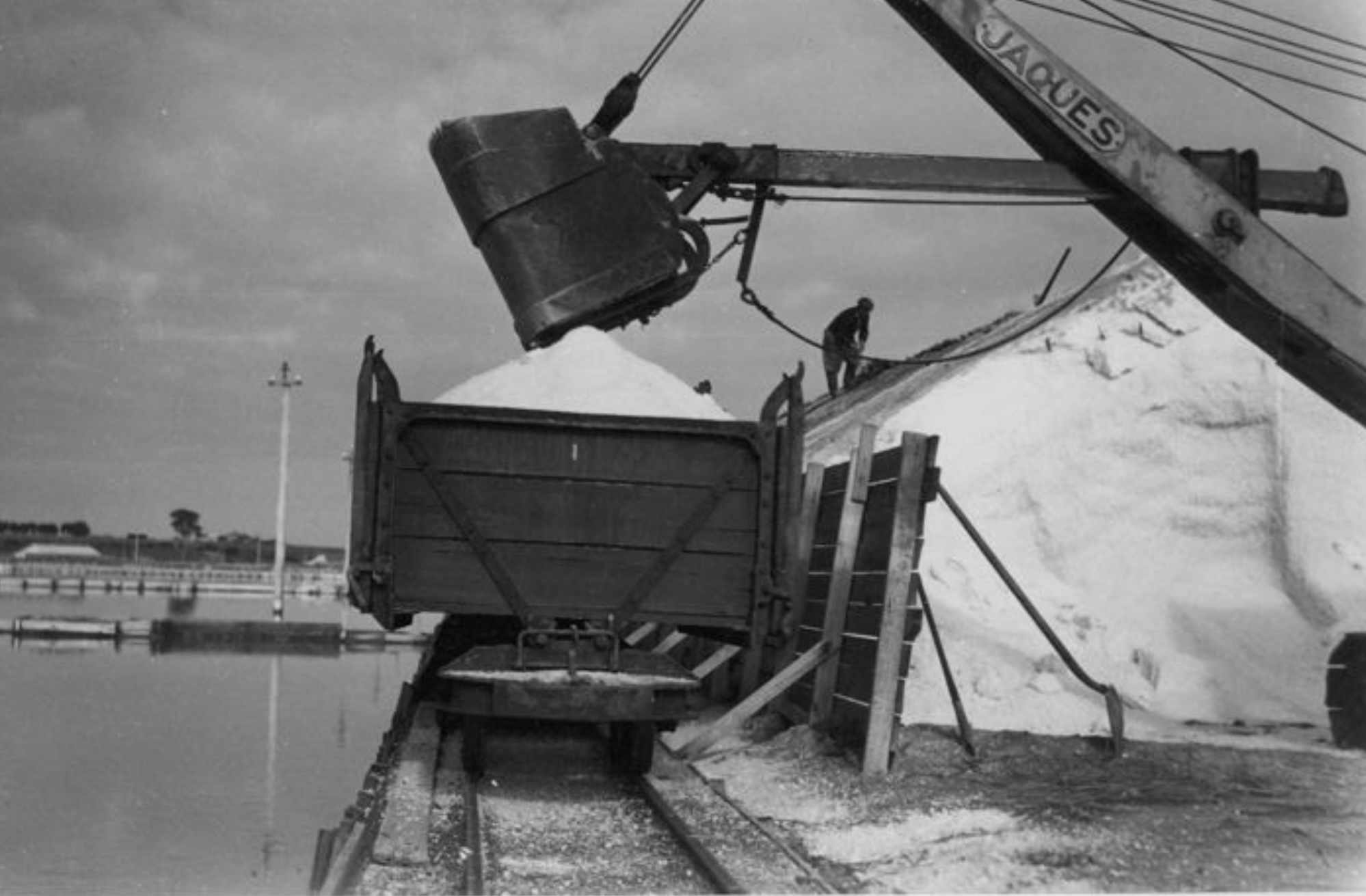
It’s a long haul from salt-mine Siberia to the saltworks of Geelong but for many migratory birds it’s an annual sojourn that makes the lagoons at Moolap quite the unique wildlife sanctuary.
And just as salt-mine air is deemed therapeutic, even collected in some parts of the world, so too are the salt pans south of Stingaree Bay a healthy haven for these peripatetic visitors.
While the avian attributes continue, though, it’s fair to say the saltworks landscape’s changed a bit, out there along the Port Road.
Not much left of the old saltworks other than the cypresses lining the road and, of course, the curlews, stints and Siberian migratory birds wading through the old timber-lined pans.

The brick and wooden buildings that served as the admin and operations hub of a 110-year enterprise wrapped around that Stingaree littoral are gone. The large salt mounds have vanished. The rail lines and trolleys, the graders and dozers, conveyor, silos, the lot.

And, of course, the people who once worked there, too. Not that they’re really gone. A recent Facebook post showed plenty are still about, and with sharp memories of Cheetham Salt workmates, accidents, kids play, marching teams on the oval, old rail links, horse-drawn wagons – even a bloke with a salt gun who supposedly shot kids in the tail.

Of course, the saltworks themselves presented a fair change to the original samphire flats and the fish- and shellfish-rich wetlands that had sustained Wathaurong folks forever. The salt business arrived in 1888 but a fair bit had already been unfolding at Point Henry, Geelong’s initial port, since the mid-1830s; stevedoring, hotels, gardens, homes …

Images of Richard Cheetham’s salt operations can be found across all manner of collections; Public Records of Victoria, State Library of Victoria, Heritage Council of Victoria and others.

Early aerials show a shattered-glass pattern of lagoons surrounded by sparsely populated farmland, a vacant Point Henry and grey waters to the north. Some moody shots capture the pans with Eastern Park and the You Yangs in the distance.
Other shots capture the shovel-intensive industry of harvesting and transporting salt, later conveyor belts, and the operation’s green-roofed red and yellow-brick work buildings. Likewise, horse-drawn cartage and a small tram that ran along Wilsons Road to the old Queenscliff railway.
Cast about and you’ll find old fashion shoots with models, even ballet dancers, snapped against the long-time landmark salt mountain backdrop.
Local recollections of the saltworks, which closed fully in 2009 after being taken over by Ridley Corporation, are strong, as evidenced by recent activity at the I Lived in the Geelong Area Facebook site, viz:
- “Loved the changing of the colors in the drying salt pans. All the vehicles suffered rust problems!”
- “The salt pans were the best playground, growing up in Newcomb in the 70s.”
- “Grew up in Wilson’s Road and the little train went past our house taking the salt.”
The Vic Heritage Council outlines the saltworks’ significance as “an extensive industrial site, spread over an area of approximately 500 hectares. It consists of a series of evaporation and crystalliser pans, an extensive basalt sea-wall and a memorial hall/library building and former manager’s residence, both of which are located on allotments south of Portarlington Road.”
Cheetham’s initial 21-year lease from the government was extended to 99 years in 1892. The manager’s house was built in the1890s. The recreational hall/ library was built in the 1920s.
Cheetham employed large numbers of workers. It built a second saltworks in Laverton in 1924 and a third at Avalon in 1951. The Moolap saltworks closed for a period in the 1990s before finally shutting up shop in 2009.
What the future’s likely for the site is unclear.
A Ridley Corp proposal for a marina-style housing development fell into abeyance some years ago with the government wrangling a strategic plan to develop the Moolap area for residential and tourism ends.
Neighbouring Alcoa is looking to work up a legacy housing precinct, too,
In toto, it seems possible the area could be looking at a population of 10,000-plus at some point, further underpinning Geelong’s role as a major growth corridor.
That’s not counting Siberian migrants.


